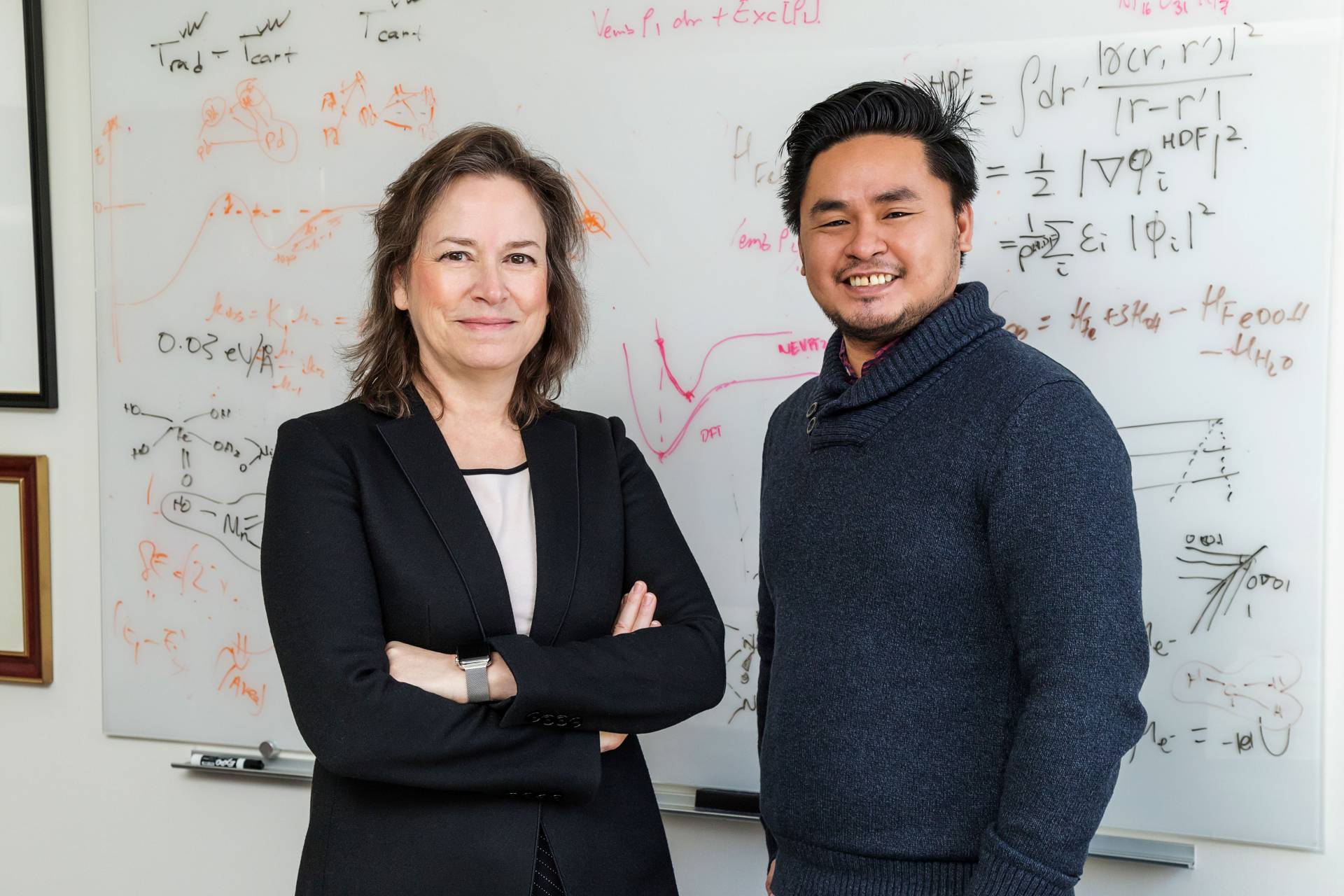Science
Related: About this forumEmily Carter Predicts Low Temperature Photodissociation of Nitrogen Gas Bonds.
Last edited Sun Feb 4, 2018, 01:12 PM - Edit history (1)
Although nitrogen comprises about 78% of the planetary atmosphere, living things cannot utilize it in its native state, and until the early 20th century, all of the bioavailable nitrogen depended on nitrogen fixing bacteria, often (on land) in symbiotic association with legumes. The enzymes responsible are probably iron based biocatalysts. (cf. PNAS 2006 November, 103 (46) 17107-17112 (A thermophilic nitrogen fixing bacteria is also known (cf Science 15 Dec 2006:Vol. 314, Issue 5806, pp. 1783-1786 - it or a similar organism may have played a role in the evolution of life on earth.)
In its diatomic elemental form nitrogen is extremely non-reactive. In fact, many chemical reactions in the lab are conducted under pure nitrogen gas (or semi-pure nitrogen in which the other constituent is argon) because the gas is considered inert, a kind of honorary noble gas.
One of the most important industrial chemical reactions on which our food supply depends is the Haber-Bosch process for breaking the triple bond in N2 gas, which liberated humanity from dependence on legumes for nitrogen fixation. (There is no physical way world population today could subsist on biologically fixed nitrogen; without industrially fixed nitrogen easily more than half the people now living would need to starve to death.)
The energy for this reaction comes from the use of dangerous natural gas (reformed with water to give hydrogen gas). According to the USGS the world produced 140 million metric tons of ammonia in 2016. The thermodynamic limit for this reaction is on the order of 20.9 GJ/ton, as of 2000, according to Smil's famous book on the topic, the industrial process's energy requirement had been reduced from 100 GJ/ton (dangerous coal based) in 1920 to 26 GJ/ton by the year 2000 (dangerous natural gas based.) (Smil, Enriching the Earth, MIT Press, 2001, Appendix K, Page 244.) It is difficult to imagine that an industrial process operating in 2000 at 80% thermodynamic efficiency has improved by all that much, but even it were operating at 100% efficiency, it would still represent a significant amount of energy. At 26 GJ/ton the demand to make 140 million tons of ammonia would be around 3.6 exajoules.
For comparison sake, all the world's solar and wind plants combined, the subject of so much delusional cheering, according to the 2017 World Energy Outlook, table 2.2, page 79 produced 9.4 exajoules of energy (out of 576 exajoules overall.)
However, much of the energy associated with ammonia production involves both heat and pressure to overcome the thermodynamic barrier of breaking the nitrogen-nitrogen triple bond in nitrogen gas. This bond is one of the strongest chemical bonds known, having a strength of 941 kJ/mol, (225 kcal/mol). (cf: Chirik et al, Nature Chemistry volume 2, pages 30–35 (2010))
Thus it was with interest that I came across a note in my email referring to recent calculations by the Dean of Engineering at Princeton University, Emily Carter, and one of her students that show that it is possible, based on computational chemistry determinations to photochemically lower the activation energy for the dissociation of nitrogen-nitrogen bonds:
New process could slash energy demands of fertilizer, nitrogen-based chemicals.
 ?itok=-6mwjhfT
?itok=-6mwjhfT
Dr. Carter is one of the foremost computational chemists in the world, a leader in the development of what is known as "orbital-free density functional theory," a method of calculations to direct the discovery of new materials, catalysts and other molecules. While this sort of thing is somewhat esoteric, it is nonetheless extremely important to science and technology, and thus to modern human life.
It is difficult to predict how world changing scientific discoveries will prove to be; many seem to be earth shattering, but afterwards encounter difficulties that prove industrially insurmountable or simply get lost for a lack of funding by people who hate science, like, say, um Trump, Ryan and their league of exceedingly stupid people.
Nonetheless this discovery predicting a gold nanoparticle based catalysis could prove to be very important. (Perhaps scientists in less declining countries than the United States could take it up.)
Dr. Carter's scientific paper is open sourced and is here: Prediction of a low-temperature N2 dissociation catalyst exploiting near-IR–to–visible light nanoplasmonics (Martirez and Carter, Sci. Adv. 2017;3: eaao4710 22 December 2017)
Have a pleasant Sunday.
wolfie001
(2,227 posts)Today's narrative is so bleak that it's very energizing to read items like this! ![]()
Kristofer Bry
(175 posts)When will it end? ![]()